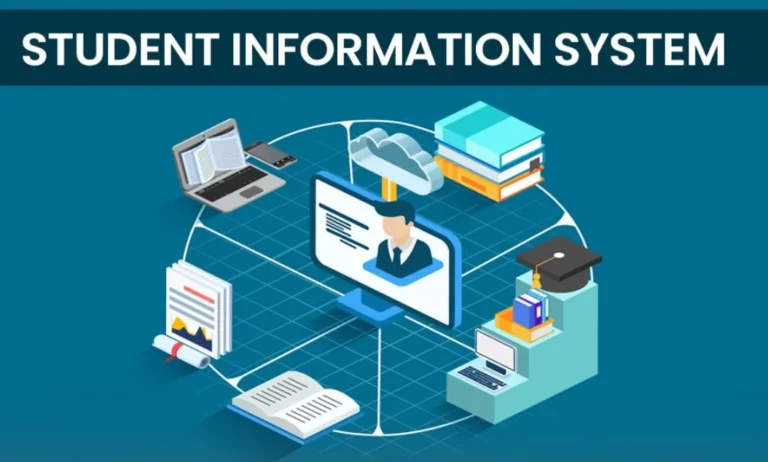Education, at its core, is about empowering learners and streamlining the teaching process. And what better way to accomplish that than with technology crafted specifically for educational institutions? From tracking student progress to managing administrative tasks, there’s one tool that truly stands out: the student information system. This system acts as a centralized hub of real-time data, revolutionizing the way schools, colleges, and universities operate in today’s digital landscape.
Understanding the Basics
A student information system (SIS) is a comprehensive software application that helps administrators, educators, and students manage all kinds of school-related data. Whether it’s tracking attendance, grades, or even cafeteria purchases, an SIS automates these tasks and centralizes the information for easy access. Think of it as your one-stop solution for everything related to student data.
Key Features Include:
- Attendance Tracking: Automate roll calls and update records in real-time.
- Grade Management: Store, analyze, and share grades seamlessly.
- Performance Analytics: Generate insights into student performance across assignments and tests.
- Communication Tools: Send alerts, notifications, or reminders to teachers, students, and parents.
- Scheduling & Timetables: Streamline class schedules, room bookings, and events.
By automating routine tasks, teachers can devote more time to actual teaching and personalized guidance, while administrators can free themselves from mountains of paperwork.
Why an SIS Matters
- Efficiency and Accuracy
One of the biggest perks of a robust SIS is how it centralizes data, eliminating the need for multiple platforms or manual spreadsheets. This not only saves time but also reduces errors—ensuring that grades and attendance records are always accurate. - Enhanced Communication
Communication gaps often hinder educational progress. An SIS provides a platform where teachers, administrators, and parents can collaborate. Whether it’s sharing grades, discussing student behavior, or addressing emergency announcements, real-time communication fosters a supportive community around each learner. - Student Engagement
An effective SIS can boost student engagement by allowing learners to check their own progress and manage their assignments in a digital environment. This increased transparency helps students take ownership of their education and become more involved in their academic journey. - Data-Driven Insights
Administrators can use performance data to spot trends, identify struggling learners, and design targeted interventions. By doing so, schools can continually refine their teaching methods, improve their curriculum, and ensure that no student falls through the cracks. - Scalability
Whether you’re a small local school or a sprawling university, a good SIS can expand or contract based on your institution’s needs. This flexibility ensures that your system can keep up with changing enrollment figures, curricula, and evolving educational best practices.
Key Considerations Before Implementing an SIS
- Ease of Use
The user interface must be intuitive. After all, the goal is to reduce complexity, not add to it. Administrators, teachers, students, and parents should be able to navigate the system with minimal training. - Customization and Integration
Every school is unique, so make sure your SIS can be customized to suit your specific needs. Look for solutions that integrate with existing tools like Learning Management Systems (LMS), billing platforms, and other essential software. - Security and Compliance
Sensitive student data should always be protected. Ensure that the SIS you choose complies with data protection laws and offers robust security features like encryption and secure logins. - Reliable Support and Training
Even the best SIS can falter without proper support. Opt for a system that provides comprehensive training, timely updates, and responsive customer service.
Best Practices for Maximizing SIS Benefits
- Engage All Stakeholders Early
From the IT team to the teaching staff, getting everyone on board from the start paves the way for smooth implementation. Host training sessions, create comprehensive user guides, and encourage open communication about potential issues. - Set Clear Goals and Milestones
Identify what you want to achieve with the SIS—be it reducing administrative burdens, improving student engagement, or boosting parent-teacher communication. Having clear goals helps measure the success of your implementation. - Encourage Ongoing Feedback
Education technology is only effective when it serves the needs of its users. Regularly collect feedback from teachers, students, and parents to address issues and fine-tune the system. - Leverage Analytics
Most SIS platforms come with built-in analytics. Use these insights to identify trends, discover problem areas, and tailor solutions that fit your students’ unique needs.
The Future of Education Technology
Technology isn’t just altering how we communicate or shop; it’s reshaping the very foundations of our education system. As students become more digitally fluent, they expect learning experiences that reflect the world they inhabit. A student information system meets these expectations by merging data transparency, real-time updates, and intuitive interfaces—all designed to streamline both teaching and learning.
Looking Ahead:
- Artificial Intelligence: Predictive analytics and AI-driven tutoring may soon become standard features, enabling hyper-personalized learning.
- Mobile Integration: With smartphones in nearly every student’s hand, mobile-friendly SIS platforms ensure that vital data is always within reach.
- Cloud-Based Solutions: Storing data in the cloud allows for seamless updates, enhanced security, and real-time collaboration across different devices and locations.
The educational institutions that embrace an SIS will be those that stay ahead of the curve, prepared for both the challenges and opportunities that come with a rapidly evolving digital age.
Final Thoughts
An SIS is more than just a repository of student records. It’s a powerful, adaptable platform designed to bring out the best in teachers, administrators, and students alike. From boosting efficiency to facilitating data-driven decision-making, a well-implemented system has the potential to transform how we approach education.
As schools continue to face new challenges—budget constraints, evolving curricula, and soaring demands for personalized learning—implementing a student information system can be the strategic advantage that propels them into a future of progress and inclusivity. After all, education should be about unlocking potential, and an SIS is one of the most effective keys we have today.
